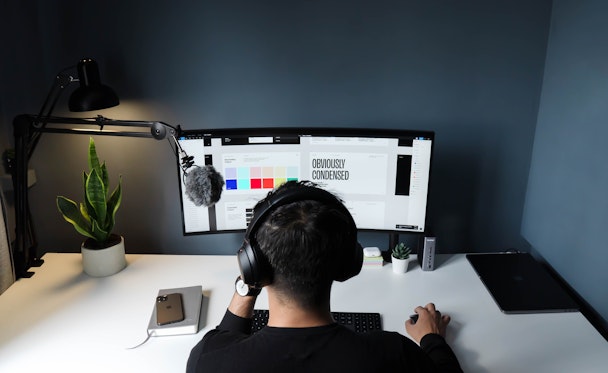Creative life after lockdown – how agencies see their future
As the pandemic spread early last year and people were instructed to stay at home, creative agencies were concerned that their entire way of working, and the quality of their output, was under threat. As it turns out, they needn’t have worried.

The survey found the vast majority of creatives (85%) had enjoyed working from home
A new survey of UK creatives by The Drum and Adobe has found that only a minority (21%) think creative output has suffered as a result of staff working from home. This surprised the panelists who were discussing the research at The Drum’s Creative Transformation Festival, during a session entitled ‘Creative life after lockdown’, which drilled deeper into the survey results.
How could Creative Cloud for teams help you? Designed for creativity, built for business.
Jordan Mitchell, co-founder and chief culture officer of Good Culture, put improved creative standards down to people having more time to do their work since they’re not commuting, as well as being able to work in the way that suits them best.
“Giving people more autonomy and freedom has made them more invested in the business and its culture,” she said. “They want to work harder because you’re respecting their boundaries and their time.”
This point about trusting your employees was backed up by Bart Van de Wiele, principal solutions consultant at Adobe.
“The pandemic forced creative agencies to let go, to realize you don’t have to be in control of everything, and everything is going to be fine,” he said. “The results are there, on creative projects the quality is there, and that’s why the survey shows two-thirds of creatives expect to carry on working from home even after all this is over.”
Remote working doesn’t work for everyone
The survey found the vast majority of creatives (85%) had enjoyed working from home. More than four in five (83%) liked the increased flexibility in starting and finishing times; over two-thirds (67%) said they were interrupted less often than they would have been in the office; and fewer than a fifth (16%) said they found it difficult to work effectively from home.
But Emily Fox, creative director at Lewis Moberly, noted that remote working was generally tougher for more junior staff.
“They don’t necessarily have the space at home to work, they didn’t all have good internet, although we’ve tried to rectify that,” she said.
Ellen Munro, creative director & associate partner at BrandOpus, agreed. She highlighted the issue of newer employees needing to learn from more experienced colleagues: “It’s so important for them to be absorbing so much from those around them; it’s been particularly challenging for them to grow, but from home.”
Van de Wiele too described the challenge of introducing new staff to the company’s way of working during the pandemic.
“We onboarded a lot of new staff in the past year,” he said. “Getting them on board is one thing but having someone more senior to guide them through a project, show them how things work, tell them where to go if they’ve got questions, that’s more challenging. You can’t knock on somebody’s door and ask them if they’ve got a minute.”
Back to the office?
These questions around how culture is established and how different people’s needs can be accommodated will determine what agency life looks like in the future. The survey found 67% of creatives expect to continue to work mostly from home, with occasional days in office. Another quarter (23%) expect to work equal amounts from home and in the office.
“We’ll keep our studio open for the people who want or need to be there, and we’ll be very flexible,” said Fox. “We also have a large force of freelancers, so we have the opportunity to be a huge virtual studio but still have our physical space in the center of Soho.”
At Good Culture, Mitchell is taking the opposite approach. The agency will continue entirely remotely because of the business benefits it has seen.
“We’re more successful than we’ve ever been, we’ve got more international clients than ever, and everyone’s so much more productive,” she says.
Where technology makes a difference
Of course, all of this depends on having the technology in place to make working from home not just possible, but effective. The survey found the areas where people thought technology had been of most benefit were client/agency relationships (chosen by 58% of respondents), brand consistency when multiple people are working on different assets (47%), and proposal development (also 47%). It was seen as less helpful with ideation (37%) and creative development (36%).
Adobe’s Van de Wiele thinks this split is inevitable.
“Technology won’t replace creativity - you need to bounce ideas off each other, but collaboration is a completely different issue,” he said. “The ecosystem of design is more than just the creatives. It’s everyone that needs to use creative assets; colors, logos, the latest pack-shot or product shot. Making all of that available to everyone in the company so that they can comment and collaborate, give better briefings and project approvals, that’s going to be key going forward.”
To watch the entire ‘Creative life after lockdown’ panel session, click here.
Content created with:

Adobe
Work management. Built for the enterprise. Connect, collaborate, and execute on complex workflows - from anywhere.
Find out more